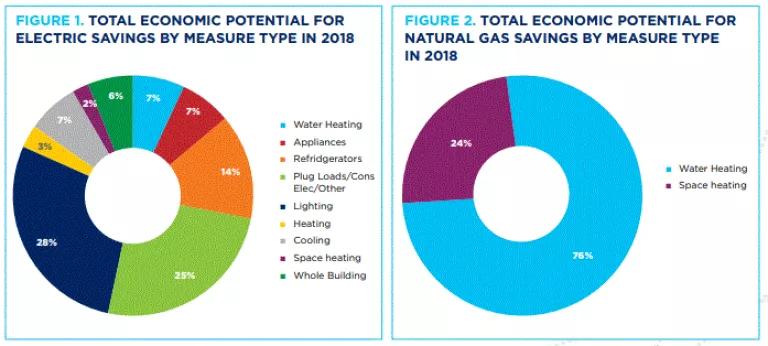Report: $200M in Renters’ Bill Savings Left on the Table

Co-authored with Jose Torres, California Environmental Justice Alliance
A report released today by the Energy Efficiency for All (EEFA) coalition finds a large amount of energy efficiency and bill savings could be delivered to California’s low-income families with high energy cost burdens, but are currently being left on the table, including as much as $200 million in utility bill savings.
Looking specifically at opportunities for low-income renters in multifamily housing eligible for the state’s Energy Savings Assistance Program, the analysis finds that savings of more than 4 times those currently achieved by the program are feasible and cost-effective. The program has the potential to yield huge benefits and savings if the California Public Utilities Commission (CPUC) approves increased investments, new measures, and innovative program delivery models.
At least one-third of those eligible for California’s low-income energy efficiency assistance live in multifamily buildings, yet energy efficiency programs have historically underserved these residents. The California Public Utilities Commission recently allocated new funds to make efficiency upgrades to common areas of affordable multifamily properties, such as laundry rooms and lobbies. This study, commissioned by the EEFA California coalition, looked at what more would be possible and cost-effective for all affordable and low-income multifamily properties—both in individual units and in common areas, such as more efficient appliances, water-heating measures, and lighting systems.

EEFA California is a statewide coalition that advances healthy, affordable solutions for underserved renters. The coalition is led by a steering committee of organizations including the California Environmental Justice Alliance, California Housing Partnership Corporation, the Greenlining Institute, Natural Resources Defense Council, the Association for Energy Affordability, and Build It Green.
Why It Matters
Low-income families need better access to effective energy efficiency programs because they spend a disproportionate amount of their income on energy compared to other households. For example, in Los Angeles, low-income families spend almost twice as much of their income on energy as their higher-income neighbors.
Low-income renters tend to live in older, poorly insulated housing, with inefficient HVAC systems and appliances. They also are more likely to live near sources of pollution such as power plants. All of these factors can lead to more cases of asthma, respiratory problems, heart disease, and arthritis. As climate change impacts worsen and temperatures become more extreme, energy efficiency is also increasingly important for low-income Californians’ health.
In a state that continues to face a housing affordability crisis, with a fast-rising homeless population, as well as approximately 800,000 utility disconnections a year, energy efficiency is a frequently overlooked strategy to help California families stay on top of their bills. Deep energy efficiency savings—on the order of an achievable 20 percent to 30 percent per property—paired with strong tenant protections to prevent displacement can help maintain and preserve affordable rental homes for low-income Californians.
California Can Expand Its Climate Equity Leadership with Efficiency
The EEFA study released in advance of national Energy Efficiency Day on Friday found twice as many possible electric savings in multifamily buildings as the CPUC currently projects for the entire low-income population.
What would it take to realize these savings? EEFA recommends:
- Better Design: Programs must overcome the particular challenges to reaching this population. More than 2 million low-income California households are renters in multifamily buildings and more than half of California’s low-income population does not use English as their primary language. These characteristics necessitate smarter, more innovative program designs than the ones in place. Specifically, we need programs that combine functions and funding in a central place so they are easier to access by owners, managers, and renters. Fortunately, model one-stop shop programs exist. For example, the state’s Low-income Weatherization Program achieves an average of 44 percent savings per affordable multifamily property but is vastly underfunded and cannot keep up with growing needs of California’s underserved renters.
- More Funding: With $2 billion worth of energy efficiency benefits and $200 million in potential utility bill savings on the table, funding for multifamily housing measures in the Energy Savings Assistance program should be increased to $90 million a year for a 10-year period, to ensure the full potential of energy savings is achieved. The Commission has previously allocated $20 million a year over a four-year period for common area measures in deed-restricted affordable properties, a subset of the total multifamily stock that is eligible for the program.
- Broader Performance Goals: The CPUC should reexamine its goals and performance metrics for efficiency programs serving this sector. The existing one-size-fits-all approach for calculating cost-effectiveness overlooks the unique and heightened needs of smaller subsectors (like older multifamily properties in specific climate zones) and should be replaced with performance targets that better achieve bill savings and co-benefits for all households.
Detailed Findings: Affordable Savings Exist for Low-income Renters
The report finds that over the next fourteen years, California’s four largest investor-owned utilities—Pacific Gas & Electric, San Diego Gas & Electric, Southern California Edison, and Southern California Gas—could cost-effectively save 934 Gigawatt hours of electricity and 37 million Therms of natural gas by addressing the needs of the affordable multifamily residential sector. (Cost-effectively is defined to include co-benefits such as improved health and reduced shutoffs). These savings represent between 20 and 25 percent of that sector’s current electricity and natural gas use.
If all of these savings were realized, low-income families could save between $136 and $200 million on their energy bills through 2030. Pursuing these savings could also create more than 87,000 new annual jobs in the communities that most need them.
What’s Next?
EEFA is committed to linking the energy and housing sectors to tap the benefits of energy efficiency for millions of low-income families. We look forward to working closely with the CPUC, the California Energy Commission, other state agencies, the Low Income and Disadvantaged Communities Advisory Boards, and the utilities to ensure programs are designed to maximize benefits for all low-income households.



